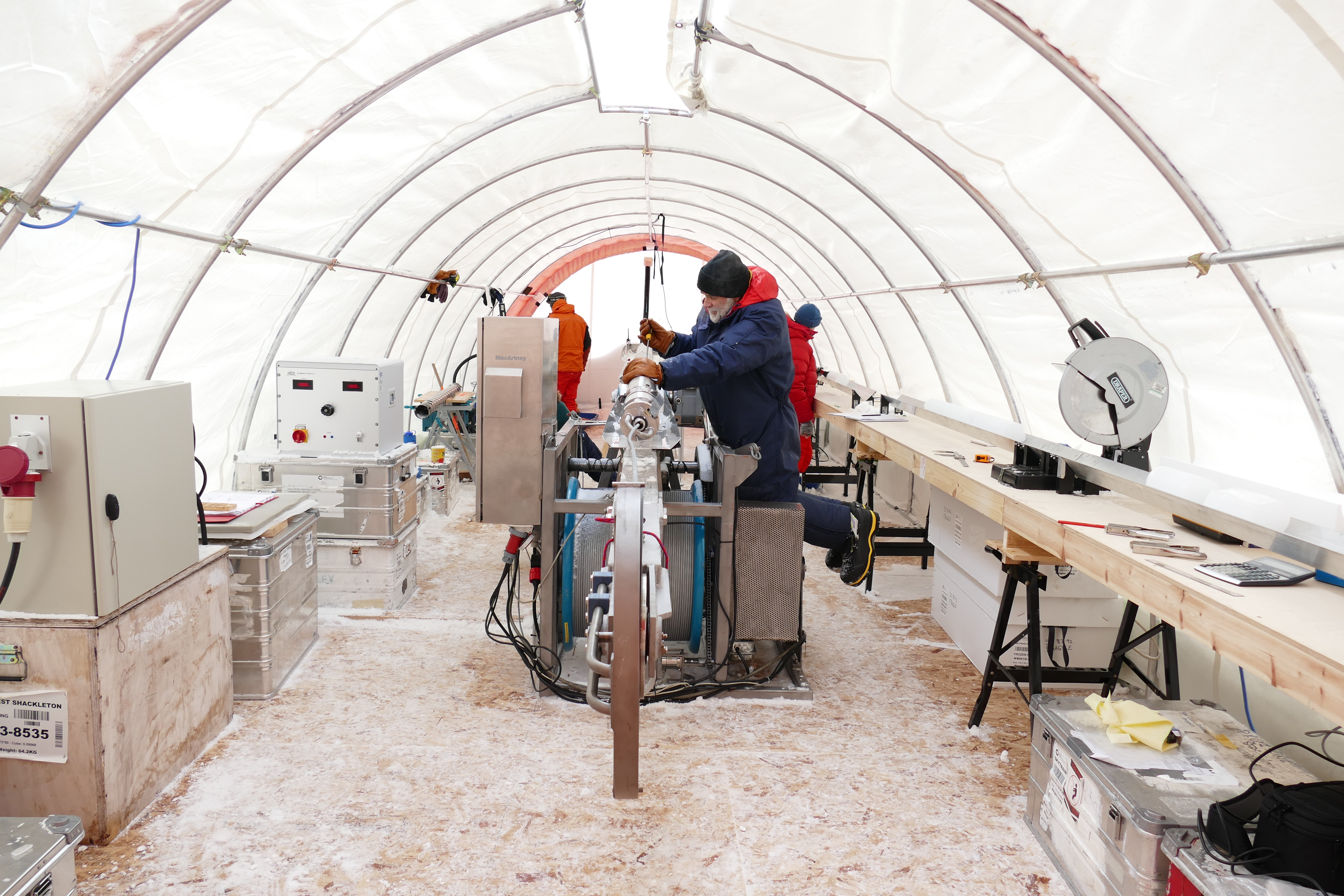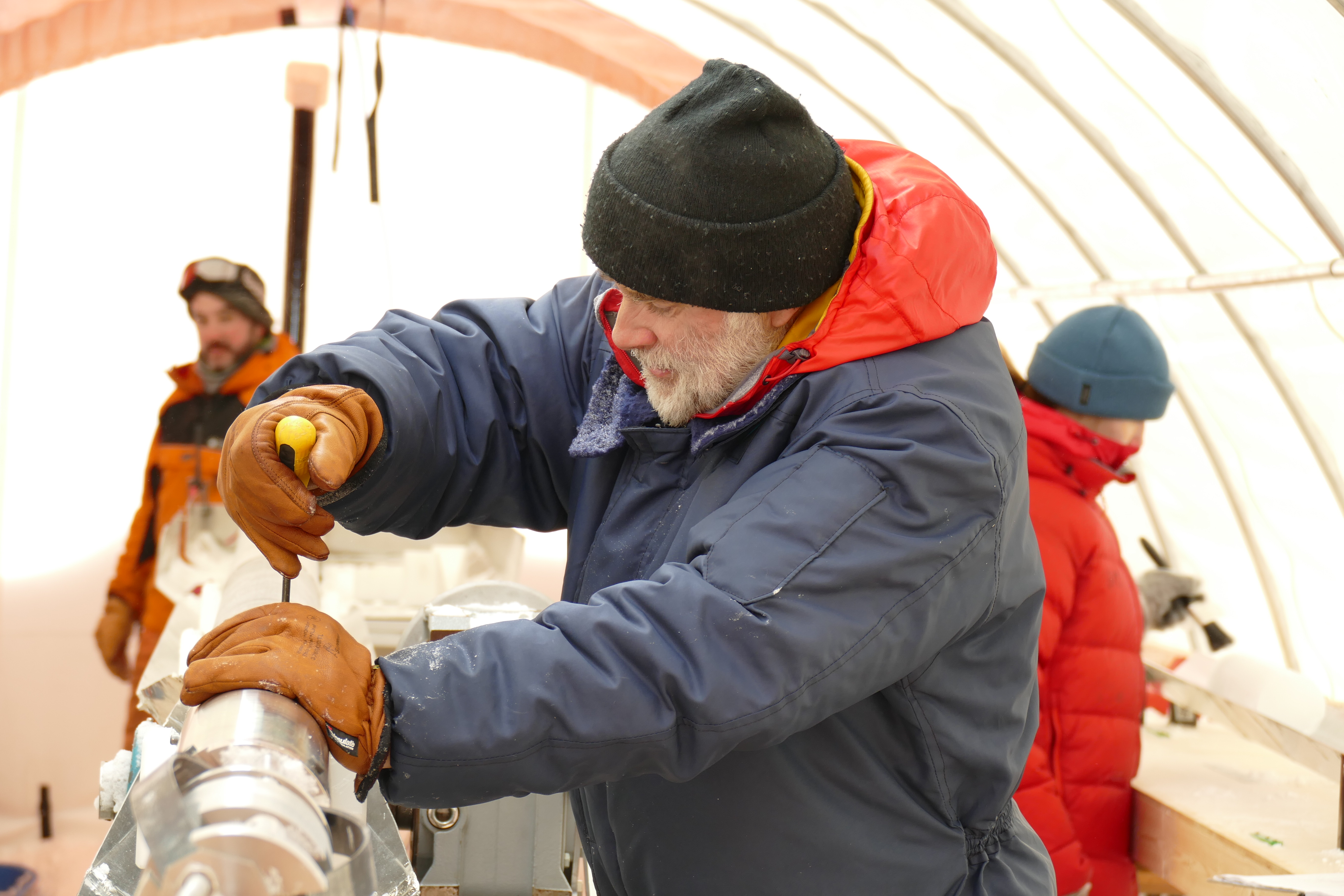Global S&T Development Trend Analysis Platform of Resources and Environment
| Scientists complete remote ice core drilling mission | |
| admin | |
| 2019-01-10 | |
| 发布年 | 2019 |
| 语种 | 英语 |
| 国家 | 英国 |
| 领域 | 资源环境 |
| 正文(英文) | A team of scientists and engineers from British Antarctic Survey and the University of Cambridge has successfully drilled over 650 metres in to an Antarctic ice cap to obtain an ice core that will show how the West Antarctic Ice Sheet responds to a warming climate. The team has been at Skytrain Ice Rise for the last seven weeks. This remote and hostile area bordering the West Antarctic Ice Sheet (WAIS) is ideally placed to assess whether the WAIS retreated during warm periods in the past. The ice sheet there is just over 600m thick, and chemicals and gases trapped in the ice contain a record of past climate. Because of its location, it is an ideal place to assess how large the neighbouring ice sheet and ice shelf were in the past.  The team is particularly interested in a period known as the last interglacial, around 125,000 years ago. At this time, Antarctica was warmer than today, at temperatures comparable to those expected in the next century, and sea level was higher. The core will show whether the warmth led to loss of part of the WAIS, giving solid evidence to assess what could happen in the future. Working in freezing temperatures, the drillers have retrieved around 15-20m of ice each day, working in shifts 16 hours per day. The ice core, 651.04m long and 10cm in diameter, has been cut into 80cm lengths, and packed in insulated boxes. It will be transported in a freezer at -20°C to the UK where it will be analysed starting next summer. The drill site consists of several small and large tents. The team have had to contend with strong winds and blowing snow but have been able to drill throughout. Speaking from the field site after bedrock was reached on Tuesday (8 January), lead scinetist Professor Eric Wolff from University of Cambridge said
Dr Robert Mulvaney from BAS, who led the drilling said

The WACSWAIN (WArm Climate Stability of West Antarctic ice sheet in the last INterglacial) project, led by Cambridge Earth Sciences’ Professor Eric Wolff, aims to understand what happened to the West Antarctic ice sheet during the last interglacial period, between 115,000 and 130,000 years ago. Find out more about the project here.
|
| URL | 查看原文 |
| 来源平台 | British Antarctic Survey |
| 文献类型 | 新闻 |
| 条目标识符 | http://119.78.100.173/C666/handle/2XK7JSWQ/233743 |
| 专题 | 资源环境科学 |
| 推荐引用方式 GB/T 7714 | admin. Scientists complete remote ice core drilling mission. 2019. |
| 条目包含的文件 | 条目无相关文件。 | |||||
| 个性服务 |
| 推荐该条目 |
| 保存到收藏夹 |
| 查看访问统计 |
| 导出为Endnote文件 |
| 谷歌学术 |
| 谷歌学术中相似的文章 |
| [admin]的文章 |
| 百度学术 |
| 百度学术中相似的文章 |
| [admin]的文章 |
| 必应学术 |
| 必应学术中相似的文章 |
| [admin]的文章 |
| 相关权益政策 |
| 暂无数据 |
| 收藏/分享 |
除非特别说明,本系统中所有内容都受版权保护,并保留所有权利。
修改评论